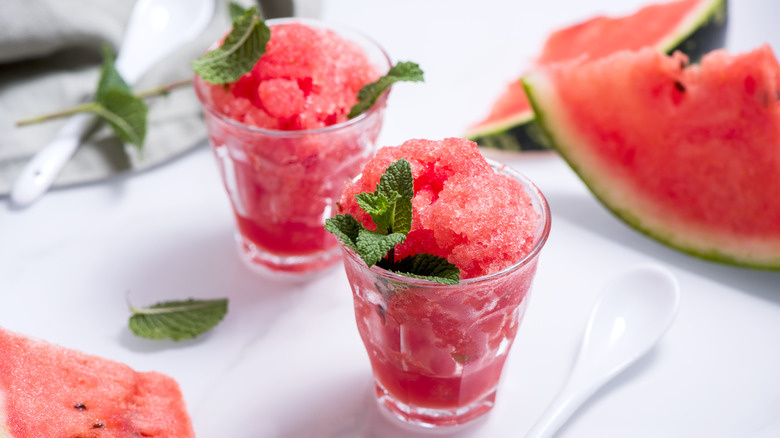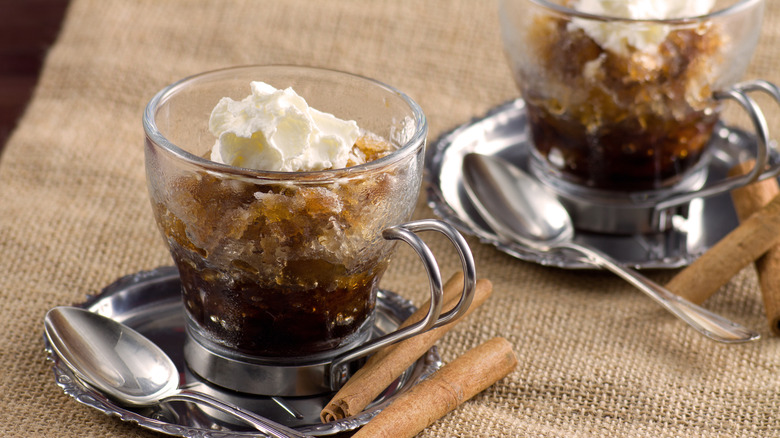Italian Sorbetto Vs. Granita Siciliana: Is There Really A Difference Between These Two Fruity Desserts?
Italy boasts an embarrassment of riches when it comes to delicious frozen desserts. Aside from gelato, two of the most popular picks are granita and sorbetto. It's hard to go wrong with either refreshing sweet, since they share the same elemental ingredients of sugar, water, and fruit juices. How do you distinguish one from the other? The fundamental difference lies in the technique used to create each dessert and the texture that occurs as a result.
In the 16th century, Sicilians would buy snow from the innovative nevarolu (people who collected snow off Mt. Etna — a volcano that is still active today — and stored it in caves until summer). They would then would mix sugar or honey, fruit juice, and water in a zinc bucket positioned inside of a larger, wooden bucket, spreading a bit of the snow and salt in the narrow slot between the two. This would freeze the mixture into an icy, grainy-textured granita.
That process is long obsolete. Today, many recipes for Sicilian granita instruct you to put a sugar, water, and fruit mixture in the freezer, periodically scraping it with a fork as it solidifies into a pile of flavor-infused ice shavings. However, the granita you'll find at dessert shops in Sicily is made with a slow mixing and freezing process that results in the more delicate, granular consistency of granita, rather than crushed ice. Sorbetto, meanwhile, is made in a similar manner to gelato — but with assolutamente no milk allowed.
Granita is granular, and sorbetto is creamy smooth
Deciding which of these two desserts you like most depends on your taste buds' texture preference. If you love that gritty, granular experience, granita is for you. But if you are looking for a creamy, smooth frozen dessert, you are talking sorbetto all the way. Antonio Latini, a man who worked for the Spanish Viceroy in Naples in the 17th century, was evidently a fan of that luscious consistency. He published what we now know to be the first recipe for sorbetto, featuring a slow, methodical churning technique that keeps the infusion of air to a minimum and delivers an almost ice cream-like texture.
Experts agree that adding dairy immediately disqualifies a frozen treat from sorbetto status, which is also true of granita. However, people tend to elevate their sorbettos with quite a lot of other add-ins, like herbs or liqueurs. Because dense sorbetto has so little air, its flavors are quite intense, which is one reason why chefs like to use it as a palate cleanser between courses. The same cannot be said about granita, whose traditional plating involves a nice big brioche by its side for a sweet and hearty breakfast.

